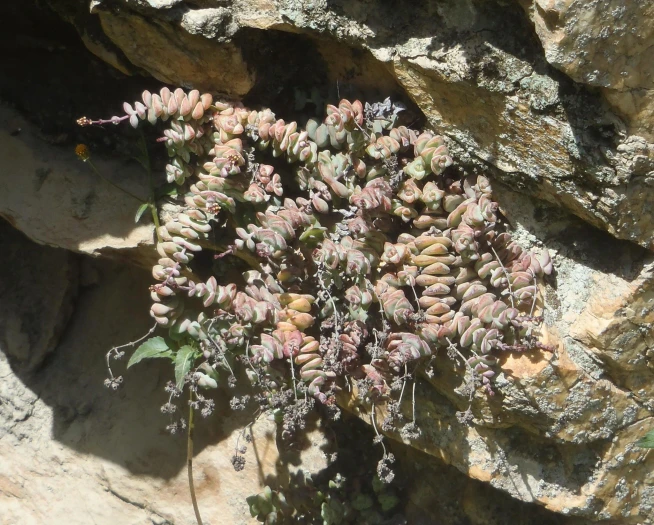String Of Buttons
(Crassula perforata)
String Of Buttons (Crassula perforata)
/
/

Nicola van Berkel
CC BY-SA 4.0
Image By:
Nicola van Berkel
Recorded By:
Copyright:
CC BY-SA 4.0
Copyright Notice:
Photo by: Nicola van Berkel | License Type: CC BY-SA 4.0 | License URL: http://creativecommons.org/licenses/by-sa/4.0/ | Rights Holder: Nicola van Berkel | Publisher: iNaturalist | Date Created: 2013-03-15T12:33:25-07:00 |
























Estimated Native Range
Climate Requirements for New Berlin, Wisconsin
| This Plant | Your Site | Plant Suitability for Your Location | ||
|---|---|---|---|---|
| • Precipitation | 9" - 43" | 33" | Your precipitation may be too high for this plant. | Too high |
| • High Temp. | 72°F - 89°F | 82°F | Your summer temperatures are normal for this plant. | Excellent |
| • Low Temp. | 32°F - 54°F | 10°F | Your winter temperatures may be too cold for this plant | Too cold |
This plant may not grow well at your location - your precipitation is too high.
Summary
Crassula perforata, commonly known as String of Buttons, is a perennial succulent native to the rocky outcrops and slopes within the arid and semi-arid regions of the Cape Provinces and KwaZulu-Natal in South Africa. It typically forms sprawling clusters reaching up to 18 inches (45 cm) in height, with stems densely packed with triangular, stacked leaves that resemble a string of buttons. The leaves are gray-green with edges that may turn pink or red when exposed to sunlight. It blooms in spring to early summer, producing small, inconspicuous cream to pale yellow flowers that are not particularly showy.
String of Buttons is valued for its unique geometric leaf arrangement and ease of care, making it an excellent choice for rock gardens, container plantings, and as part of succulent collections. It requires minimal maintenance and is drought-tolerant once established. In cultivation, it prefers a well-draining cactus or succulent potting mix and full sun to partial shade. Overwatering can lead to root rot, so it is important to allow the soil to dry out between waterings. It can be propagated easily from stem cuttings or leaves, which root readily. While generally pest-resistant, mealybugs and scale insects can sometimes be a problem.CC BY-SA 4.0
String of Buttons is valued for its unique geometric leaf arrangement and ease of care, making it an excellent choice for rock gardens, container plantings, and as part of succulent collections. It requires minimal maintenance and is drought-tolerant once established. In cultivation, it prefers a well-draining cactus or succulent potting mix and full sun to partial shade. Overwatering can lead to root rot, so it is important to allow the soil to dry out between waterings. It can be propagated easily from stem cuttings or leaves, which root readily. While generally pest-resistant, mealybugs and scale insects can sometimes be a problem.CC BY-SA 4.0
Plant Description
- Plant Type: Succulent
- Height: 1-2 feet
- Width: 2-3 feet
- Growth Rate: Moderate
- Flower Color: Yellow
- Flowering Season: Spring, Summer
- Leaf Retention: Evergreen
Growth Requirements
- Sun: Full Sun, Part Shade
- Water: Low, Medium
- Drainage: Fast, Medium
Common Uses
Drought Tolerant, Fire Resistant, Groundcover, Low Maintenance, Potted Plant, Rock Garden, Street Planting
Natural Habitat
Native to rocky outcrops and slopes within the arid and semi-arid regions of the Cape Provinces and KwaZulu-Natal in South Africa
Other Names
Common Names: Pagoda Plant, Necklace Vine
Scientific Names: Crassula perforata, Crassula anthurus, Crassula pattersonii, Crassula perfilata
GBIF Accepted Name: Crassula perforata